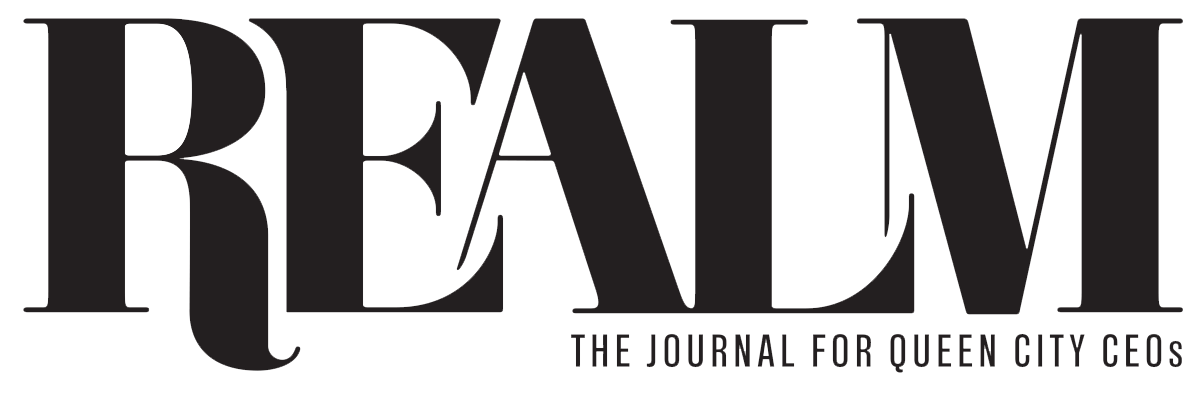Established businesses might appear to outsiders as operating like well-oiled machines, but who says you can’t teach an old dog new tricks? In the case of innovation, the mixed metaphor is warranted, as information technology leaders across the Cincinnati region are proving they’re never too old (or established) to learn something new.
“The really good IT folks totally understand their business mission and know what technology can do, so they’re constantly coming up with ideas like e-commerce,” says Geoff Smith, co-chair of the Cincinnati CIO Roundtable and senior technology advisor for the Cincinnati Bengals. “To me the role of a really dynamic chief innovation officer is to connect what’s possible with what’s needed.”
Smith would know. Among other past roles, he spent some 25 years in IT and innovation with Procter & Gamble, rising through the ranks to the eventual position of deputy chief innovation officer. His P&G experience became the foundation for his innovative mindset; he’s particularly fond of sharing an anecdote about his work as CIO of company operations in Japan, when P&G was first setting down roots in Asia.
“We had this huge blind spot, and when we first opened business in China we got a rude surprise,” says Smith. “We didn’t understand the Chinese mentality of abundance being a safety net, so our employees there were just stacking boxes in warehouses. Products were slow to sell at first, and they were just getting accumulated in warehouses. So the innovation back in 1994 or 1995 was, Hey, we’ll give each of these distributors a PC loaded with software to manage their inventory. Sometimes I think people consider ‘innovation’ to be whiz-bang laser beams, space technology, or whatever. Often innovation can just be a mindset.”
Innovation often begins with small steps, once leadership’s minds are focused on change. Incremental improvements can be just as innovative as top-down ultimatums. More often than not, for big companies with brand recognition and deep roots in their community and business sectors, the kind of agility typically associated with innovation isn’t readily accessible or easy.

Take insurance, for example. “In the 1880s, we were probably selling life insurance on the back of horses, and now we’re selling it online digitally,” says Jim Fitzgerald, chief innovation officer of Western & Southern. “You don’t exist for that long without innovating. That mindset is hugely important. My motto is, Innovation at a micro level. It doesn’t always have to be a big lightbulb idea. It can be, Hey, I changed this one thing, and that can have a trickle-down effect to a lot of other areas of your business.”
Fitzgerald joined Western & Southern in October 2021 following a nine-year stint with the New York Life Insurance Company. Shortly after his arrival, Western & Southern acquired Fabric, a digital life insurance platform and mobile app. Direct-to-consumer insurance sales and service is the natural next step in the insurance industry, he says, though it doesn’t eliminate the need for in-person interaction.
“The Fabric acquisition and the things we’re going to go to market with because of that partnership are very innovative,” says Fitzgerald. “A lot of it involves simple process changes. To me, innovation without execution doesn’t matter. Being able to execute and deliver on what you say you’re going to do is paramount.”
Fitzgerald is a strong proponent of empowering employees throughout the organization to think innovatively. “The thing I like with innovation is asking the teams, Hey, what do you think? If you could change something, what would it be?” he says. “And, again, the answers often don’t involve big, grandiose changes.”
A company like Western & Southern, managing billions of dollars of assets, doesn’t surpass a century of success without innovation, Fitzgerald acknowledges, but 134 years of success can breed some amount of rigidity in terms of “how things are done.” Reassessing and streamlining are always in order.
“So we’ve changed some processes and removed some processes that were just a burden,” he says. “It can be amazing, when you ask the question, Hey, why are we doing this? Is it helping us? that often our people will respond, No, no, no. So we need to have the right mindset to say, OK, let’s stop doing that.”
Maintaining the company’s focus on individual customers is the next immediate step for Western & Southern, says Fitzgerald. “The biggest innovation is happening around the direct-to-consumer product space,” he says. “We have a product called IncomeSense that’s aimed at folks who are younger and who don’t necessarily know about insurance or want to buy a large insurance policy. IncomeSense is perfect for them because it can replace their income if something unfortunate were to happen.”
Kinettix is a Blue Ash-based IT field services organization serving a wide swath of clients across the globe, and like Western & Southern its innovation focus is centered on the end user. The company uses technology to solve problems for clients, says Vice President of Strategic Design Lisa Cook.

“The market we’re in is highly commoditized, so we’re always looking for the angle of, What makes us different than any other IT field services provider?” she says. “In the last two years with the pandemic and higher fuel expenses, a looming recession, and higher costs everywhere, we figured out that the most expensive part of our transaction is the technician himself who’s on the ground solving our client’s problem.”
The company now allows clients to directly engage with a Kinettix technician, while “wraparound services” from the office make sure that each technician does exactly what he or she is supposed to do to complete the job. Cook says it isn’t all that difficult to come up with innovative ideas, but the challenge usually comes in implementing those ideas. That’s where she sees the natural evolution of the company’s direct engagement solution—decentralizing control and empowering clients is the key to business expansion and client retention.
“We want to take a not-as-skilled field technician, send them onsite to a job, and have someone in a central location feed them the information they need in real time to complete the work,” she says. “That’s innovation out on the edges, right? To get there, a lot of training has to be developed, both internally and with our clients. But that drives your innovation. If you have a vision for where you want to go, you’re going to have to innovate to accomplish it.”
Another commoditized business sector is market research, where 84.51 excels in analyzing data from Kroger shoppers. With information flowing in from 60 million U.S. households and more than two billion annual sales transactions, Chief Data and Technology Officer Todd James says innovation is part of daily life at the downtown-based firm.
“You really see the impact when business knowledge and science come together,” he says. “There’s an increasing focus on making sure our science is getting more intimate with the business clients so creativity can happen. That’s where you get the benefits of applied analytics.”
The company invests in disruptive innovation, such as its Collaborative Cloud platform, as well as in making sure innovation finds buy-in throughout the organization. Fostering such an environment across 800-plus employees is an integral part of what makes the analytics giant tick. “I’m fortunate to be working at a firm that has a lot of talented, restless, and innovative people,” says James. “We’re focused on making sure that staff creativity and ideas can rise to the top. You need to create and reinforce a culture that says, We’re collectively better off when we take ideas and share them among each other and our teams start to build on them. Across the diversity of experiences that we have in our firm and across a diversity of skills and education, we can really benefit by listening to each other and listening up and down the entire chain.”
In the case of 84.51, James says he’s combining the firm’s existing capabilities in data analytics with focused experimentation. “We’re looking at ideas that are high-risk and high-return,” he says. “We’re trying to drive that forward by managing our innovation kind of like you manage an investment portfolio. You realize that a lot of these ideas aren’t going to succeed, and that’s OK as long as the overall portfolio succeeds. The goal here is to advance the company’s overall portfolio of products.”

Fitzgerald agrees that being open with work colleagues about the aim of innovative ideas usually results in better buy-in. “As a leader I try to be very open with my team,” he says. “You need to create a culture of, It’s OK to have a bad idea. I think people, especially in large corporations, are afraid to speak up. We manage risk for a living. We’re an insurance company, so we have a tendency to automatically swarm an idea and say, No, we can’t do that. We need to temper that back. You need a diversity of ideas.”
Coincidentally, both James and Fitzgerald took on their current roles in October 2021. And much like Fitzgerald’s foray with absorbing the Fabric acquisition, James is overseeing a new innovative rollout to leverage the 84.51 brain trust. “We have some work being done around pricing and promotion optimization,” he says. “If you have 10 products and you can hit each of those products with five price points each week, across four weeks, you know how many combinations you have? Five to the power of 40. So that’s using science to say, Across five to the power of 40 different price combinations, what’s the right one? I mean, that’s some exciting science. That’s a win for us in serving our clients.”
Zooming out from the individual companies, wins in the proverbial IT and innovation community across Cincinnati come on the wings of another well-worn metaphor: a rising tide lifts all ships. The Cincinnati CIO Roundtable has been bringing together the region’s information technology leaders since 2006 to connect and grow the region’s IT ecosystem. While a company’s technology and support systems can certainly be proprietary, the Roundtable is eager to share resources.
“We’ve gone from being a passive group that shares best practices or learnings with each other to a much more proactive group that co-invests in talent and attraction,” says Smith. “CIOs are coming together and actively sharing resources and ideas and building relationships that can help grow the talent pipeline for everyone. That’s pretty cool, I think, and I’m not sure there are many parallels in cities across the U.S.”
In a similar vein, INTERalliance of Greater Cincinnati invests in the next generation of IT professionals by giving area students an in-depth look at information technology field and possible careers in the region. Pre-COVID, Smith says, the organization was engaging with 1,000 or so high school students a year in 30 to 50 schools across the region. “The important thing is that close to 40 percent of those students ended up matriculating into an IT-related major in college,” he says. “Almost that same percentage came out at the end of college into tech careers.”

Both 84.51 and Western & Southern are participants in INTERalliance, which launched in 2005. Building and supporting a strong information technology talent pipeline is important for the whole region, Smith says, adding that the CIO Roundtable also hosts an annual summer event for college interns at local companies. “The intent of the event is, especially for those out-of-town students, to say, If you accept a full-time job here, look at what kind of vibrant tech community you’ll be joining,” he says. “People tend to stereotype the Midwest and think, OK, it’s not Silicon Valley, and it’s not New York City or Boston or Chicago or wherever. These organizations and alliances help attract and retain talent to help the region win through collaboration rather than have companies fighting each other for talent.”
As the local IT market continues to strengthen and grow, the need for talent will also continue to grow. “We’re hiring all the time for technology,” says Fitzgerald. “I’m really looking for younger technology professionals because I want to get a younger culture coming in to Western & Southern, and I also want their ideas. I want them on my team so I can understand how they think and they can challenge how we think.”
James says he’s seen the Cincinnati IT community evolve, in his words, dramatically. Before taking on his role with 84.51, the last four of his 14 years with Fidelity Investments was spent in the Cincinnati region, so he’s had some time to observe it in action.
“For a midsize city in the Midwest, Cincinnati is on an incredibly good trajectory,” he says. “Coming out of Boston, which is one of the hubs of innovation, I have been pleasantly surprised, to some extent, but it also makes a lot of sense why we’re where we are now. I see great collaboration across universities, the economic development groups and corporations, and the companies themselves. Quite frankly it’s the result of a lot of people teaming up together to make this city even better. I think that’s the power of Cincinnati.”


